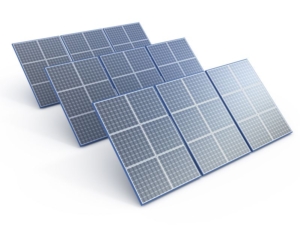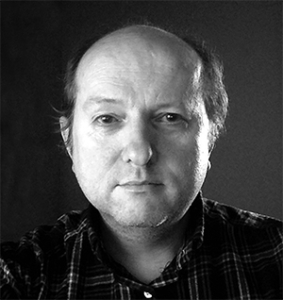Simulation of Silicon and Perovskite Based Tandem Solar Cells Using TCAD
 In the context of global heating and of energy supply, renewables have expanded spectacularly over recent years. While the balance of systems cost is now dominated by the systems rather than by the solar cells, there is ever greater incentive to increase solar cell efficiency due to increasing volume production making even small marginal cost reductions translate to large savings. In this context, the classic silicon-based technology is still progressing, for example with the inter-digitated back contact (IBC) design, which eliminates front surface shading, and is capable of bringing silicon solar cells close to their fundamental limiting efficiency of slightly above 29%. The challenge in understanding and simulating these devices is an inherently two-dimensional device performance which requires numerical modelling techniques. This presentation examines the operation of such devices by reporting numerical simulation of industrially relevant designs. In addition to classic silicon technologies, revolutionary concepts do continue to appear, and one of the most important is the new field of perovskite solar cells. These low-cost materials require low-cost fabrications methods and yield high efficiencies approaching 26% and challenging classic dominant silicon technologies. The simulation of such PSC devices is described using complementary methods to the IBC modelling. However, since increased efficiency remains the prime directive in the field of renewable energy, and since silicon is close to its limits in this regard, there is great research and industrial interest in reaching high efficiencies with tandem solar cells based on silicon and perovskite technologies. The integration of IBC and PSC models in a three terminal high efficiency tandem model is described, and circuit design aspects are considered, in terms of two and three terminal solutions and the advantages and disadvantages discussed. We therefore conclude by presenting designs for tandem solar cells going beyond the single junction bandgap solar cell efficiency limits.
In the context of global heating and of energy supply, renewables have expanded spectacularly over recent years. While the balance of systems cost is now dominated by the systems rather than by the solar cells, there is ever greater incentive to increase solar cell efficiency due to increasing volume production making even small marginal cost reductions translate to large savings. In this context, the classic silicon-based technology is still progressing, for example with the inter-digitated back contact (IBC) design, which eliminates front surface shading, and is capable of bringing silicon solar cells close to their fundamental limiting efficiency of slightly above 29%. The challenge in understanding and simulating these devices is an inherently two-dimensional device performance which requires numerical modelling techniques. This presentation examines the operation of such devices by reporting numerical simulation of industrially relevant designs. In addition to classic silicon technologies, revolutionary concepts do continue to appear, and one of the most important is the new field of perovskite solar cells. These low-cost materials require low-cost fabrications methods and yield high efficiencies approaching 26% and challenging classic dominant silicon technologies. The simulation of such PSC devices is described using complementary methods to the IBC modelling. However, since increased efficiency remains the prime directive in the field of renewable energy, and since silicon is close to its limits in this regard, there is great research and industrial interest in reaching high efficiencies with tandem solar cells based on silicon and perovskite technologies. The integration of IBC and PSC models in a three terminal high efficiency tandem model is described, and circuit design aspects are considered, in terms of two and three terminal solutions and the advantages and disadvantages discussed. We therefore conclude by presenting designs for tandem solar cells going beyond the single junction bandgap solar cell efficiency limits.
What You Will Learn:
- The advantages of industrial inter-digitated back contact (IBC) solar cells and how to simulate them in TCAD
- Properties of the emerging high efficiency perovskite solar cell concept (PSC) and how to simulate them in TCAD
- How to break through the silicon efficiency bottleneck of 29% by combining IBC and PSC technologies in TCAD simulation
Presenter
 James Connolly is a researcher at Génie Électrique et Électronique de Paris (GeePs), at CentraleSupélec in France. He holds a PhD in developing models of III-V quantum well solar cell devices from Imperial College and an HDR from Université Paris Sud. He has worked on CIGS (IRDEP, FR) on CIGS, at the Nanotechnology Centre (NTC-UPV, ES) on silicon photovoltaics as well as in industry (National Grid, QUANTASOL-UK). He has developed models of next generation quantum photovoltaic structures, models of industrial nanostructured solar cells, and models of advanced characterisation (KPFM). He has participated in a number of European projects, coordinated H2020-COST project MULTISCALESOLAR, and is currently coordinator of SOLAR-ERANET project BOBTANDEM developing three terminal perovskite on silicon tandem solar cells with selective band offset barriers.
James Connolly is a researcher at Génie Électrique et Électronique de Paris (GeePs), at CentraleSupélec in France. He holds a PhD in developing models of III-V quantum well solar cell devices from Imperial College and an HDR from Université Paris Sud. He has worked on CIGS (IRDEP, FR) on CIGS, at the Nanotechnology Centre (NTC-UPV, ES) on silicon photovoltaics as well as in industry (National Grid, QUANTASOL-UK). He has developed models of next generation quantum photovoltaic structures, models of industrial nanostructured solar cells, and models of advanced characterisation (KPFM). He has participated in a number of European projects, coordinated H2020-COST project MULTISCALESOLAR, and is currently coordinator of SOLAR-ERANET project BOBTANDEM developing three terminal perovskite on silicon tandem solar cells with selective band offset barriers.
WHO SHOULD ATTEND:
Academics, solar panel design engineers, power development engineers, product managers, management, and executives in the Solar Power markets.
When: July 15, 2021
Where: Online
Time: 10:00am-10:30am-(PDT)
Language: English

